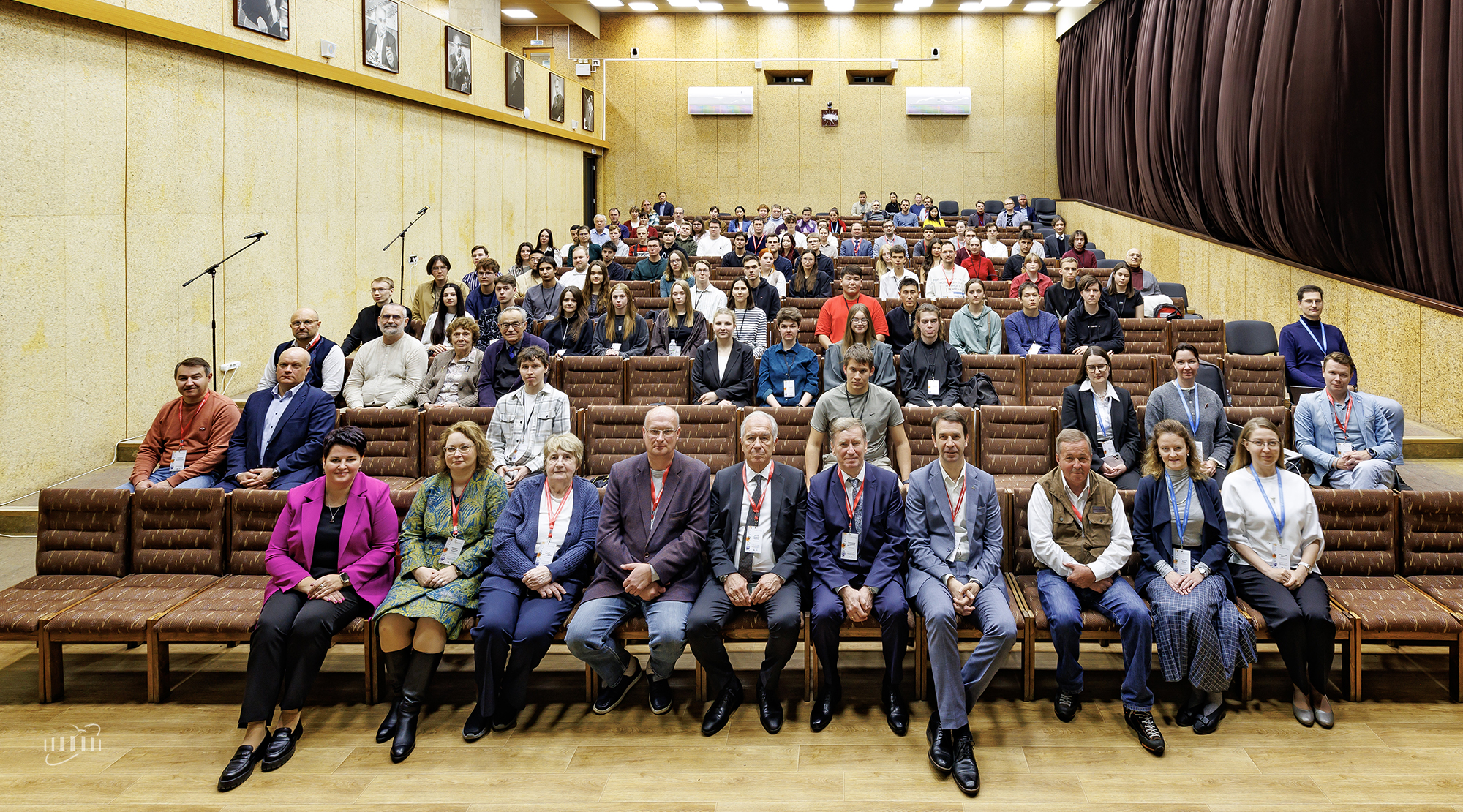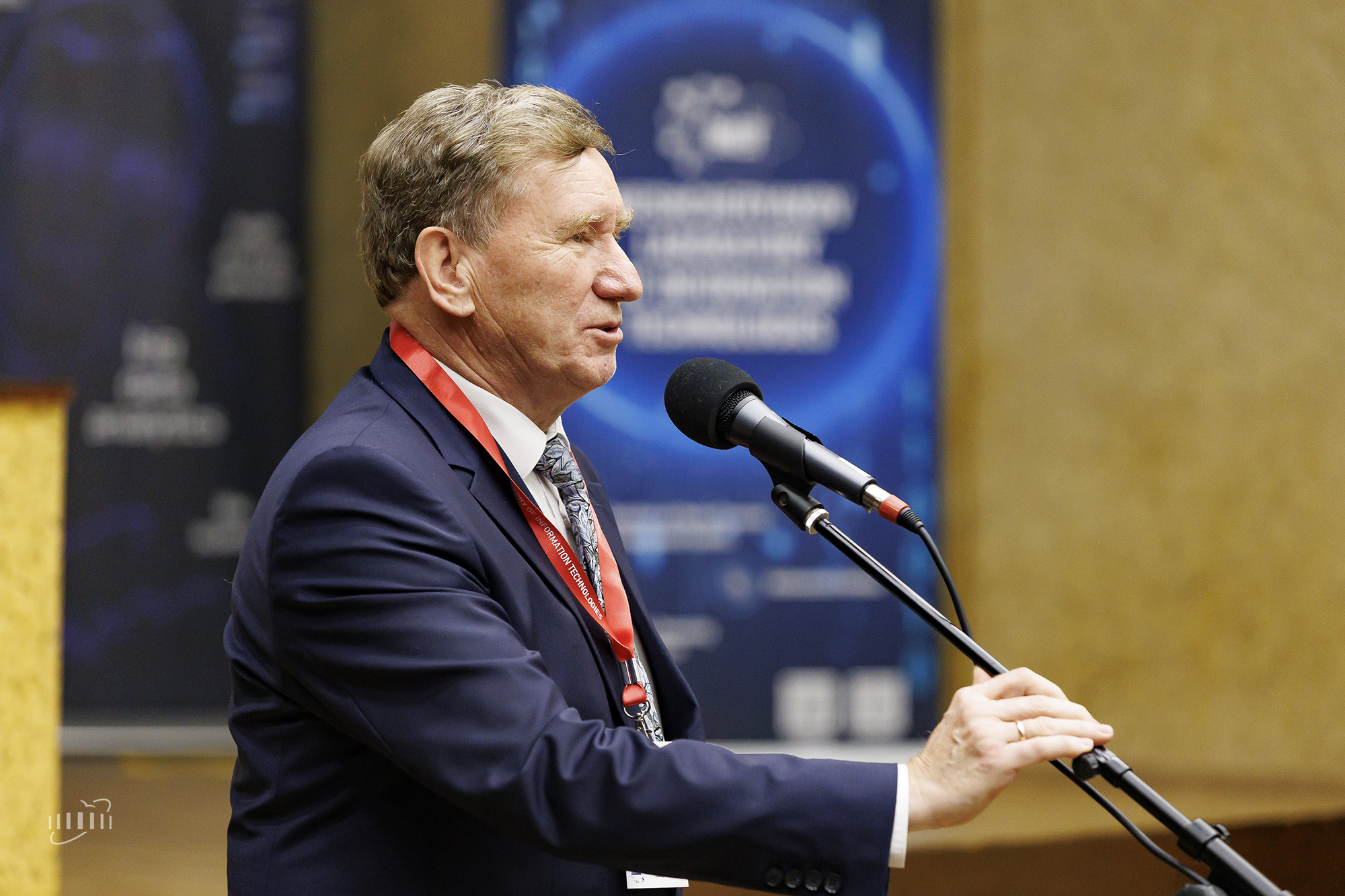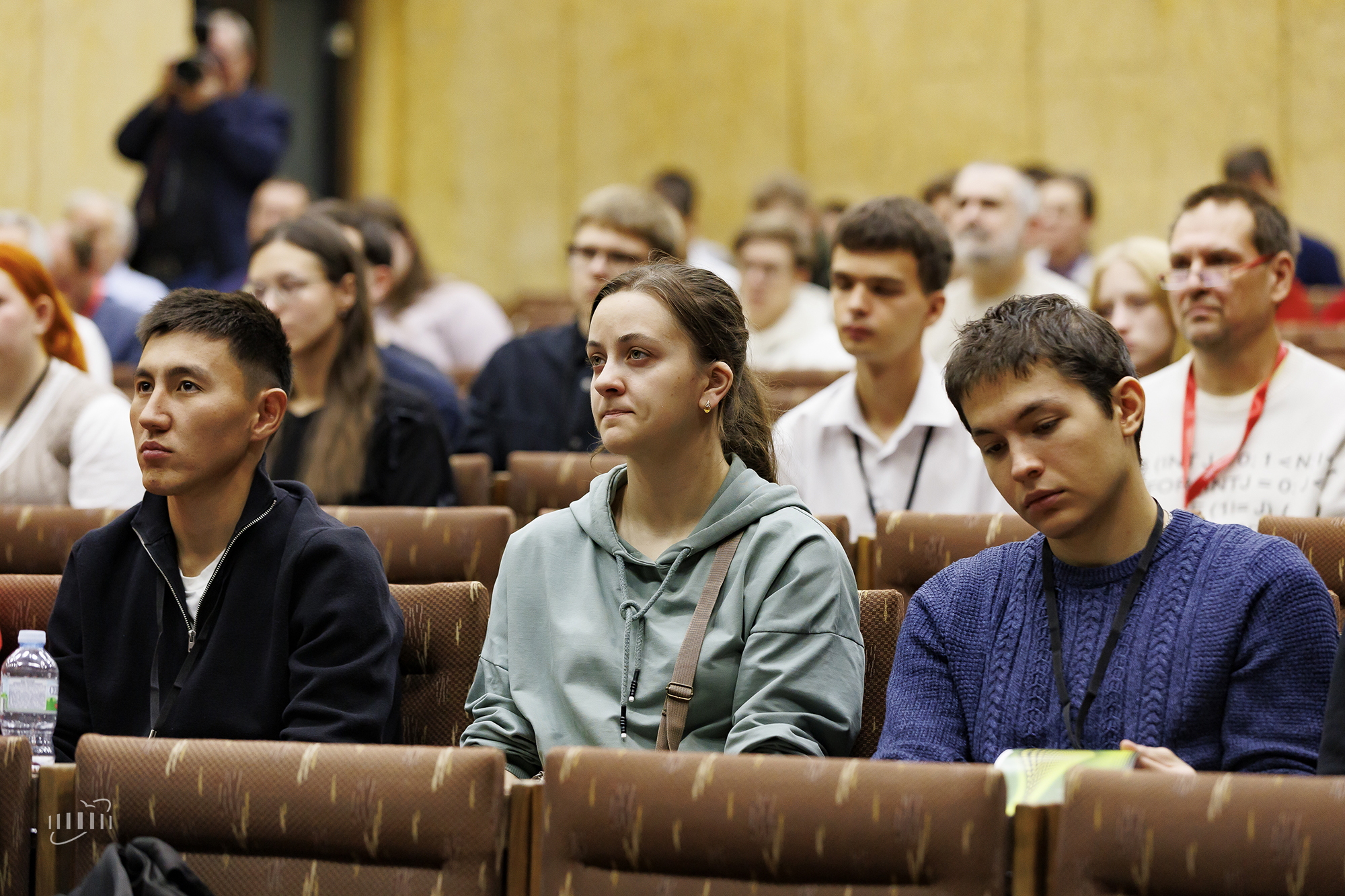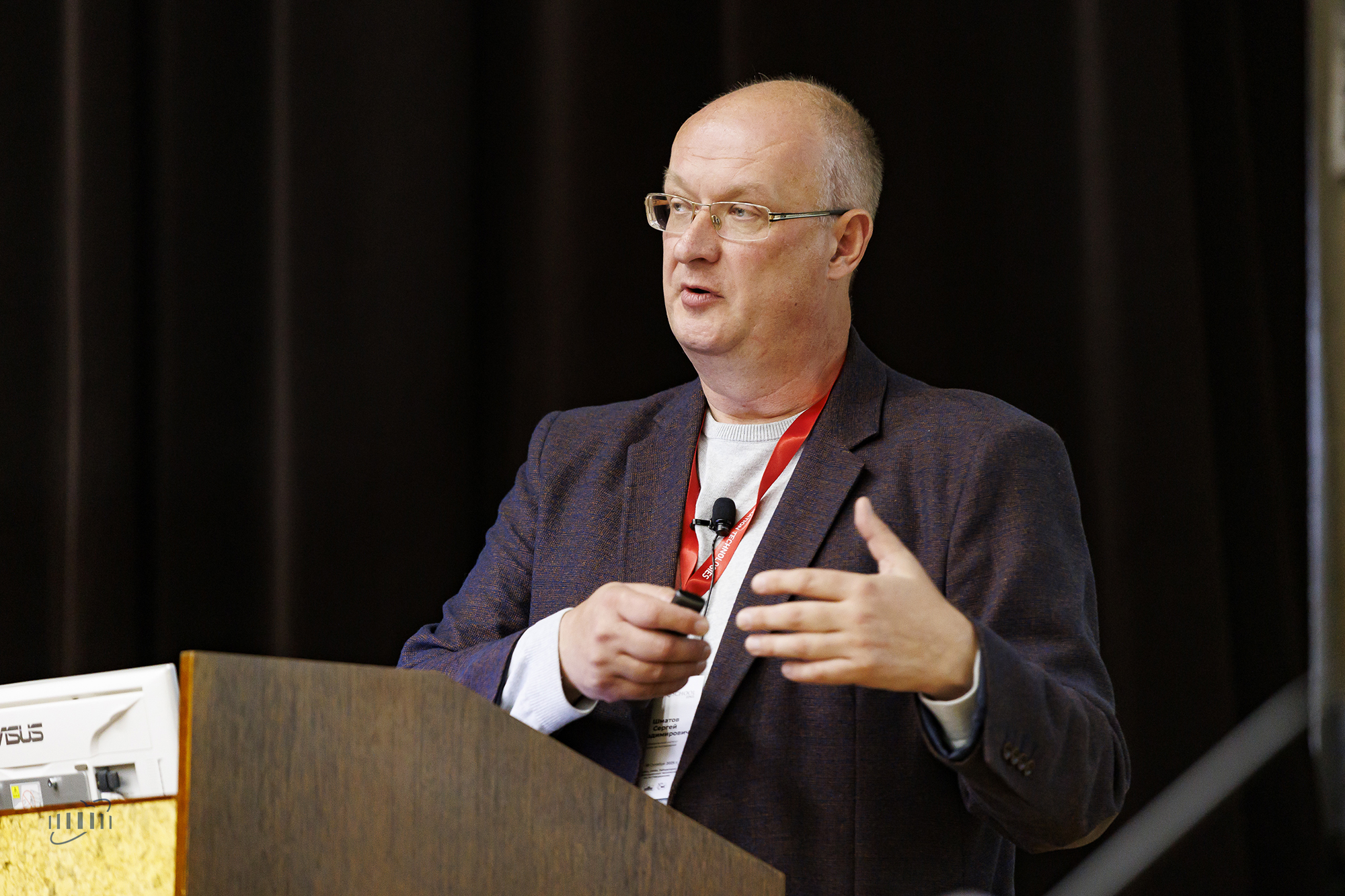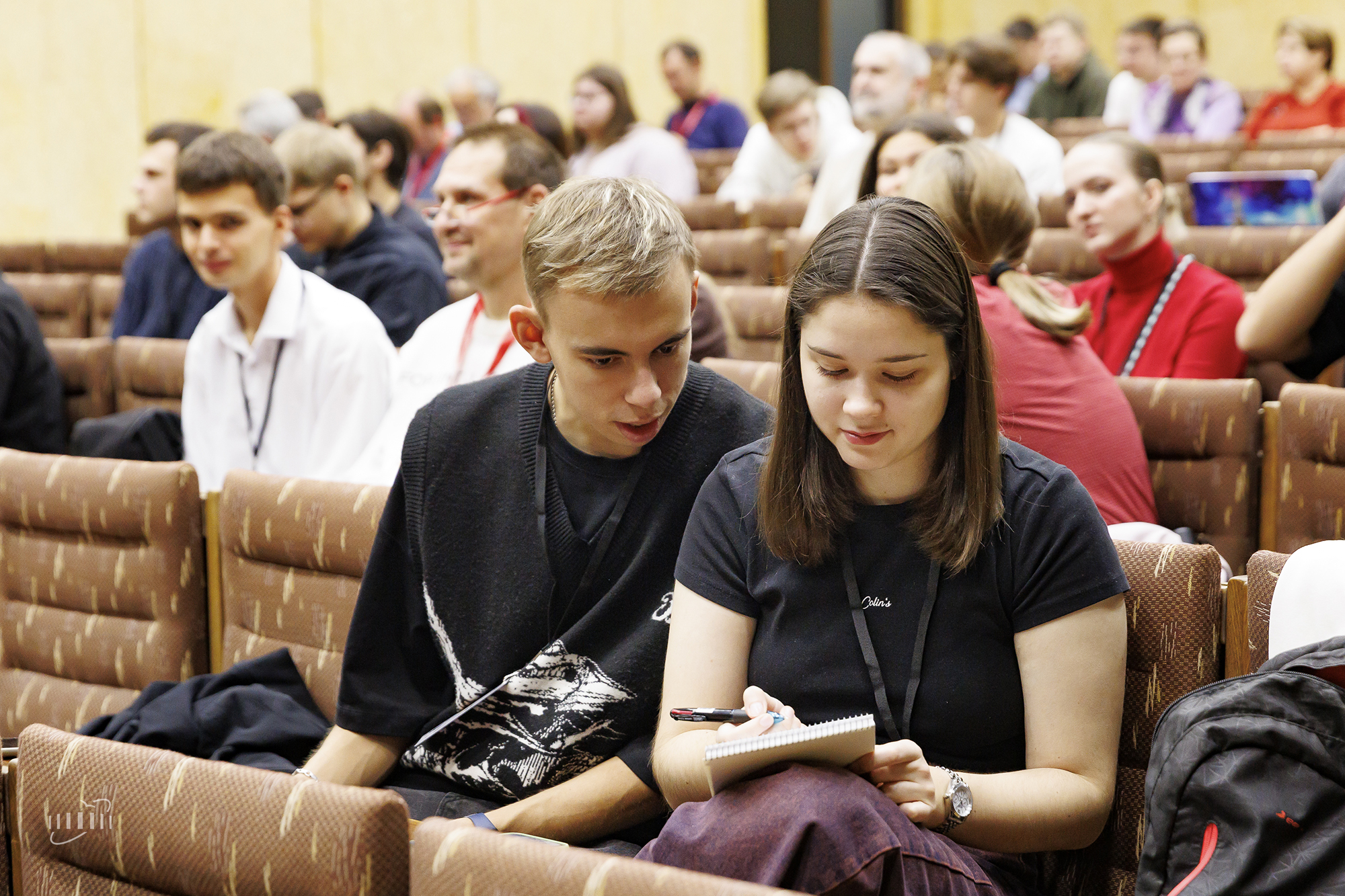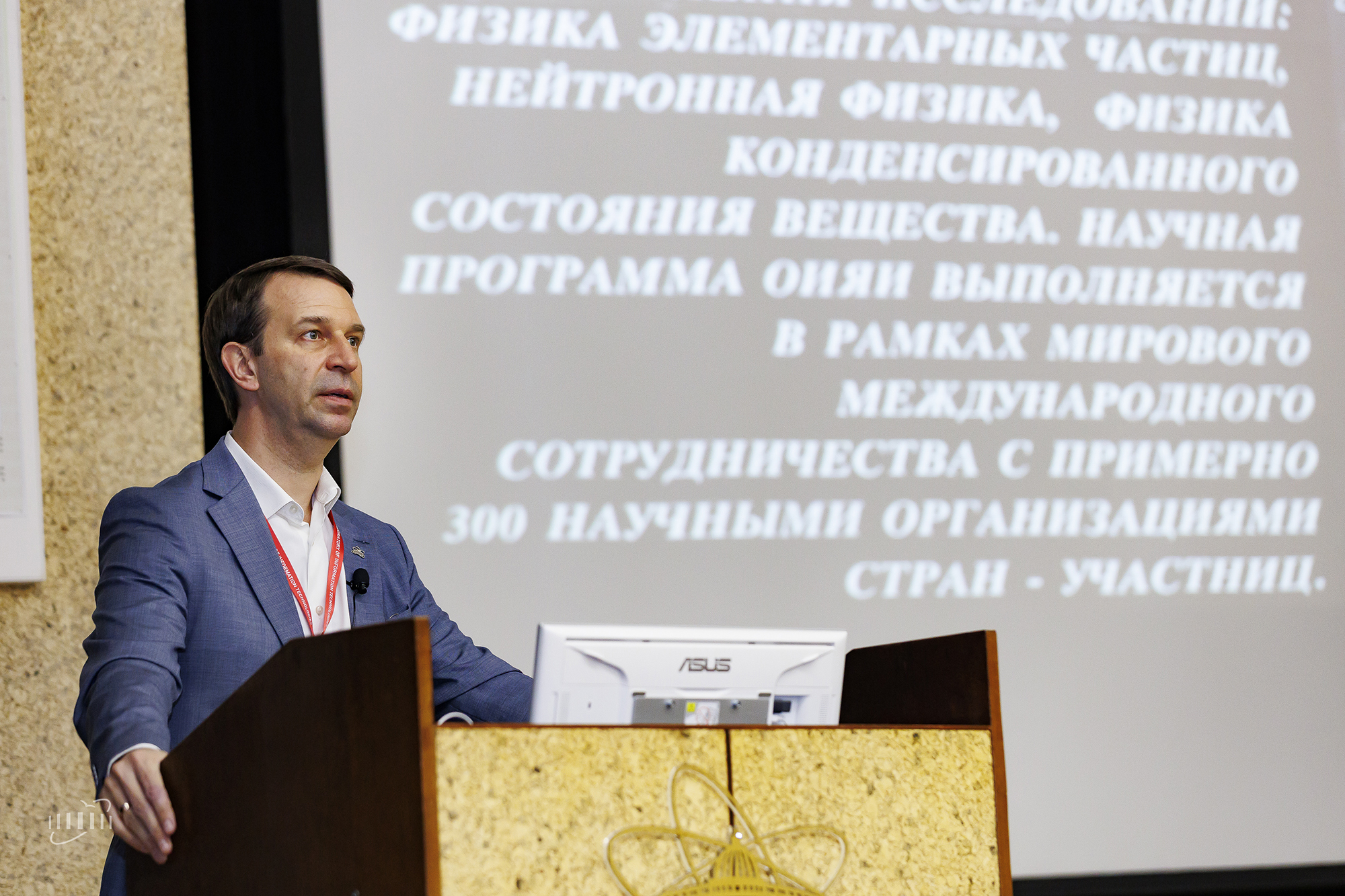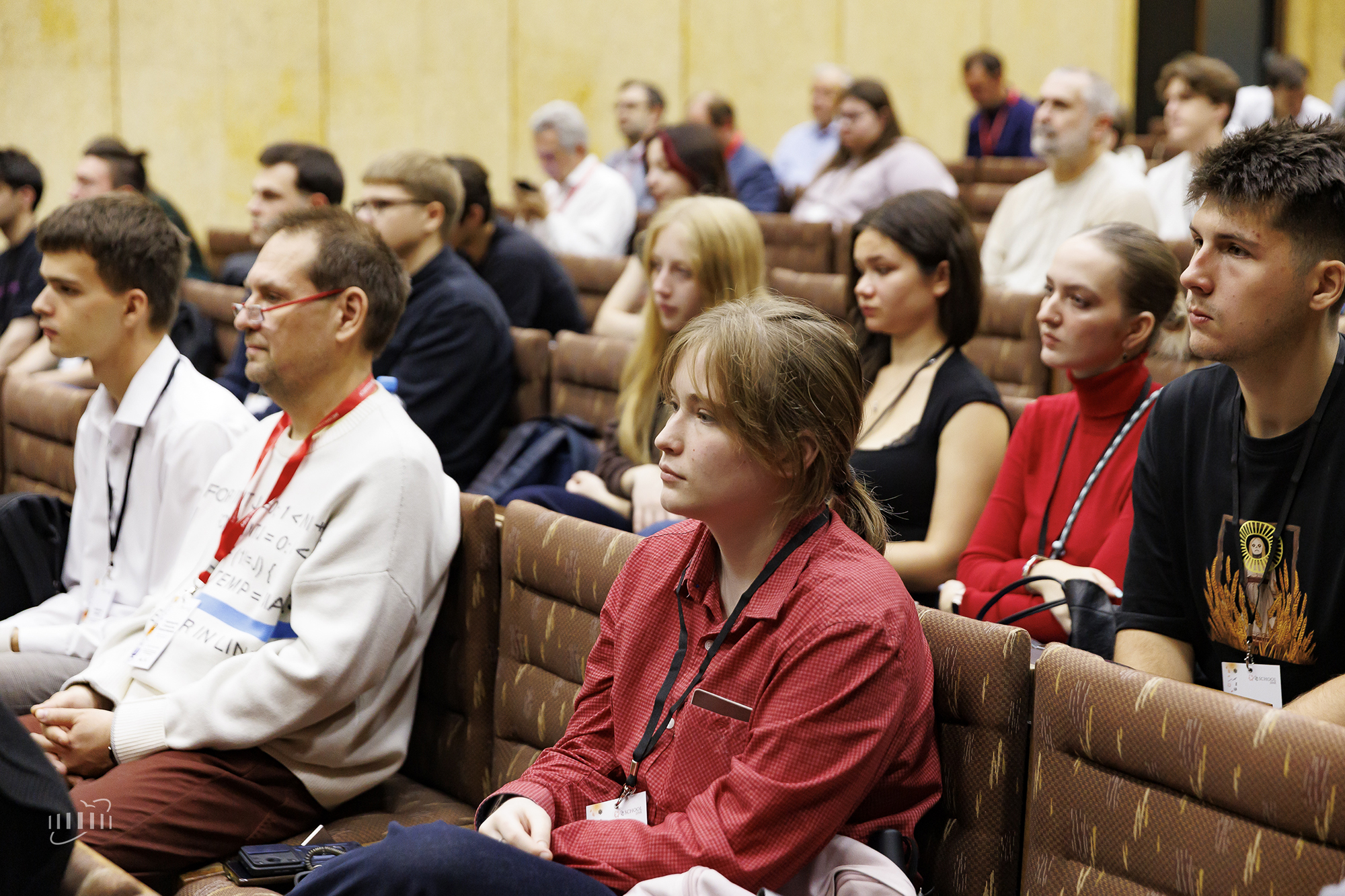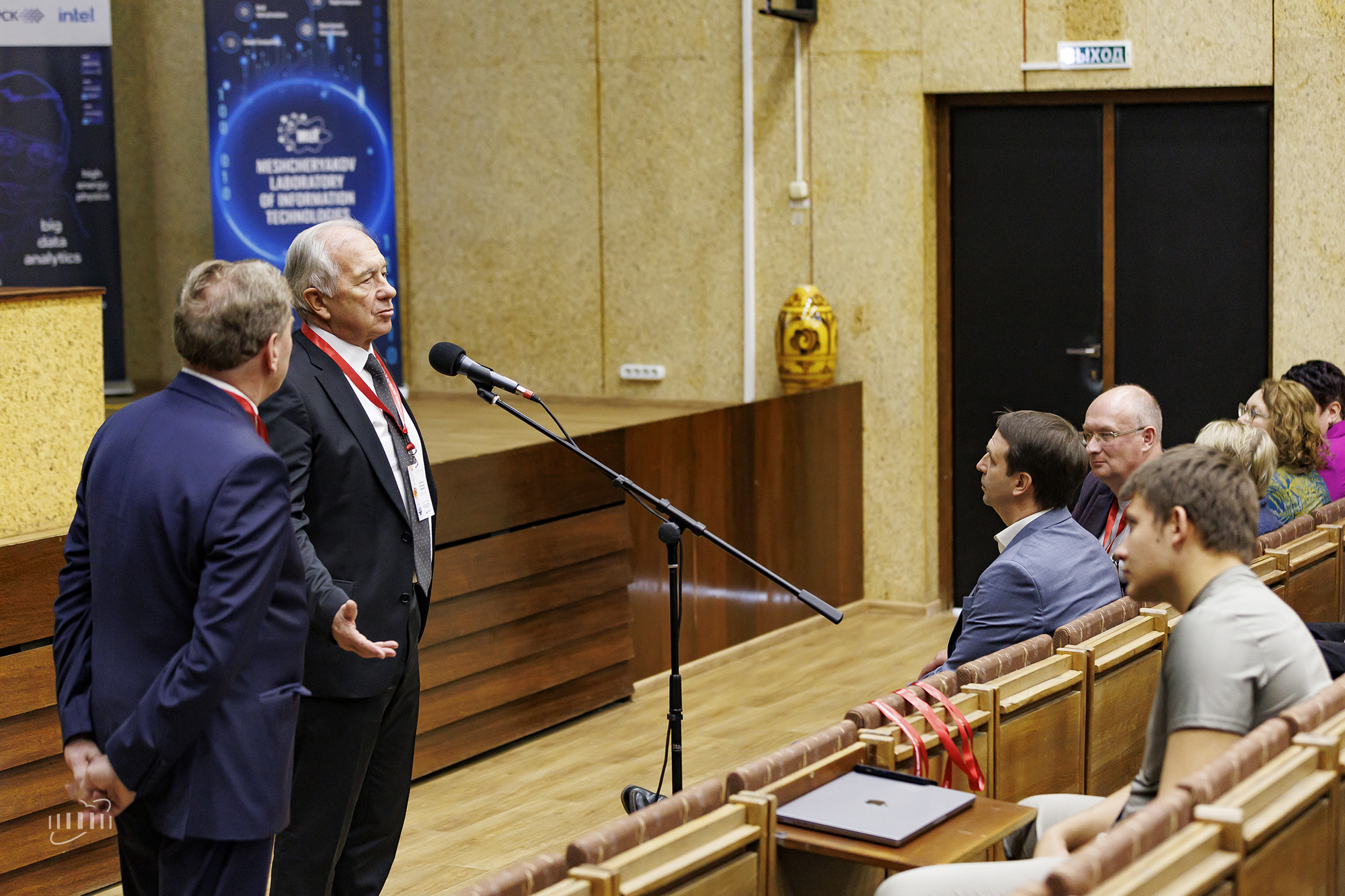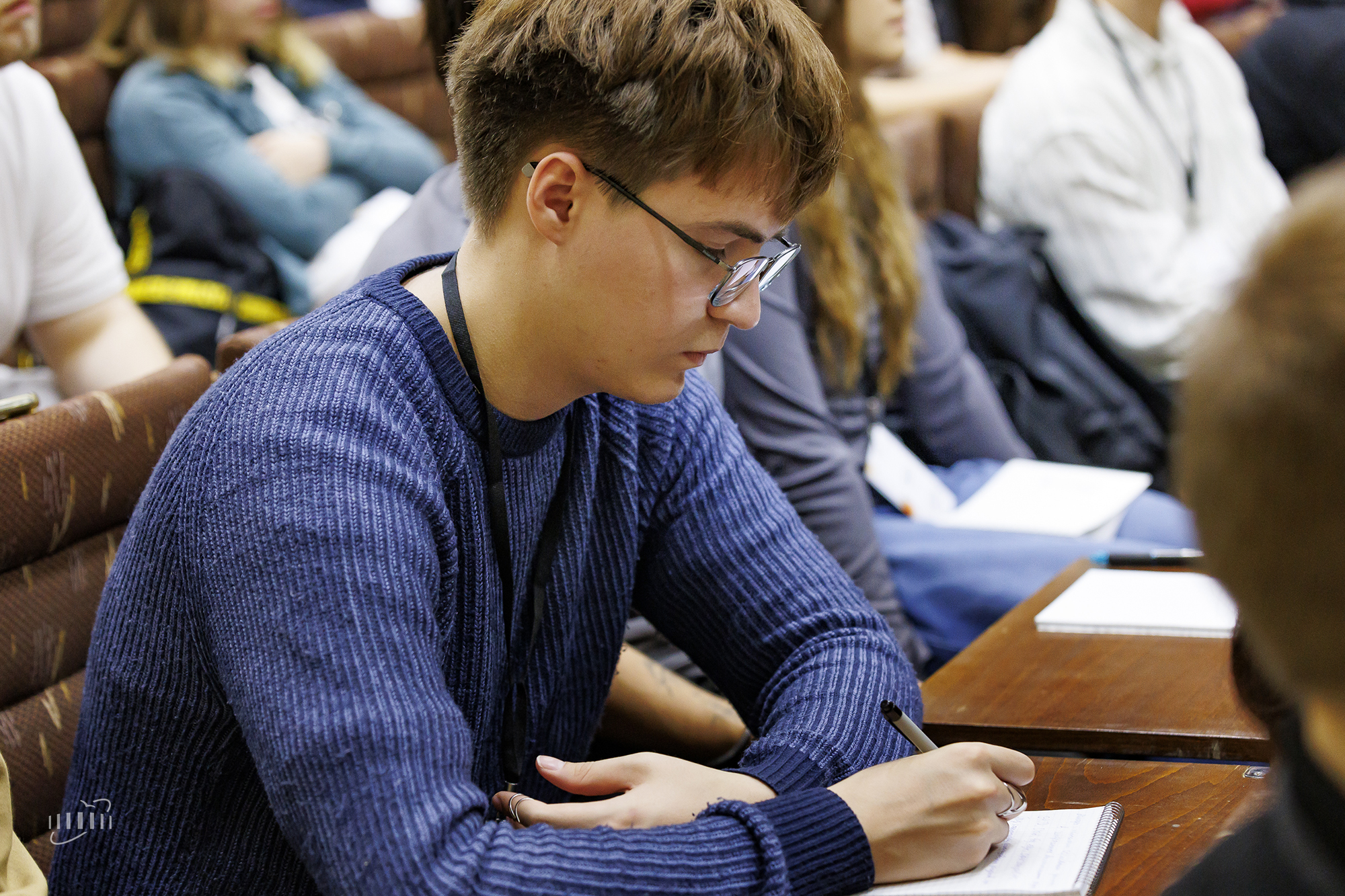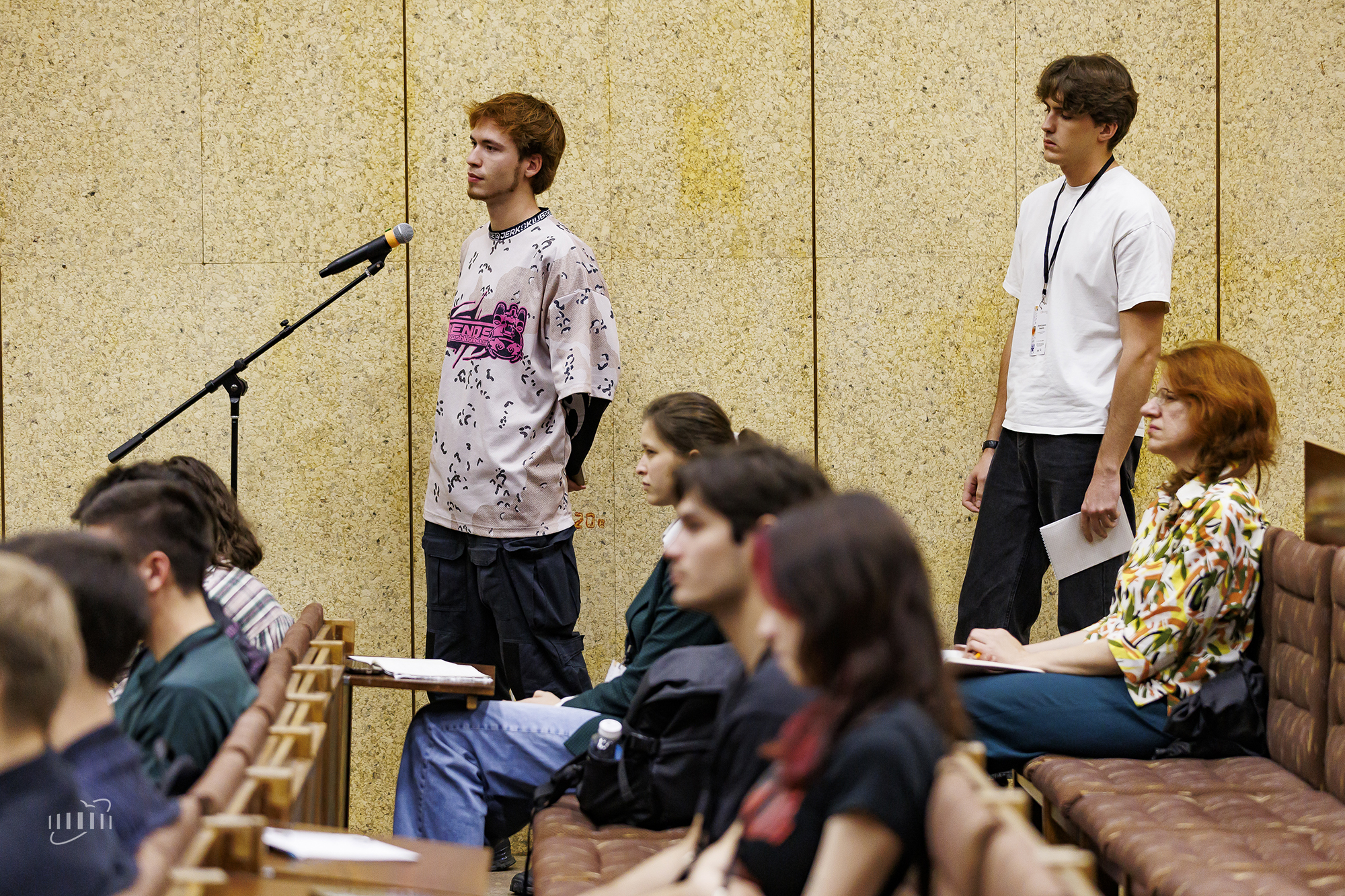Autumn IT School taking place at JINR
Education, 07 October 2025
On 6 October 2025, the 4th Autumn IT School started at the Meshcheryakov Laboratory of Information Technologies. The event brought together nearly 60 students from universities of Belarus, Kazakhstan, Russia, and Uzbekistan. The school is aimed at engaging young specialists in solving current scientific problems using advanced information technologies. At the end of the training, the students will begin working on projects related to JINR’s research, the results of which they will present at the school’s spring stage in 2026.
In his welcome remarks, MLIT JINR Director Sergei Shmatov emphasised that as part of the school students will learn about the key scientific directions of the Institute related to information technologies. “The JINR IT School will allow you to find yourself and truly develop in this field, choose interesting projects, and take your first steps in serious scientific work,” MLIT Director noted. In addition, Sergei Shmatov expressed the laboratory’s interest in attracting young specialists capable of bringing a fresh perspective to solving scientific problems.
“This school is a landmark event not only for the Laboratory of Information Technologies but for the whole Institute,” JINR Deputy Director Latchesar Kostov said welcoming the participants. “It provides a unique opportunity for students from the Member States universities to get acquainted with the advanced infrastructure of the Joint Institute, gain useful knowledge, and establish new contacts.”
School participants were also adressed by Director of the Institute of Systems Analysis and Management (ISAM) at Dubna State University Elena Kirpicheva, Deputy Director of the Institute of International Relations (IIR) at MEPhI Andrey Cherkasskiy, Head of the Department of Competitive Systems Analysis at MEPhI Aleksey Artamonov, Professor at Saint Petersburg State University (SPbU) Nadezhda Shchegoleva, Head of the Department of Systems Programming at South Ural State University (SUSU) Leonid Sokolinsky, Director of the Institute of Applied Mathematics and Computer Science at Tula State University (TSU) Alexey Sychugov, and Associate Professor at the Department of Information Technologies and Intelligent Systems at Polessky State University Pavel Pavlov.
The scientific and educational programme on the first day began with a presentation by MLIT JINR Scientific Leader Vladimir Korenkov dedicated to data processing methods in heterogeneous computing systems and MLIT’s achievements in IT infrastructure development. Sergei Shmatov spoke on the use of computing in high energy physics and the importance of information technologies for modern experiments. Assistant to the President of the Kurchatov Institute Vasily Velikhov delivered a lecture on the development of the national computer telecommunications network for science and higher education in Russia.
“I believe that the week you will spend in Dubna will be useful and fruitful for you. I am sure you will enjoy the school, primarily thanks to communication with people and secondly through engagement with the ecosystem of the Laboratory of Information Technologies,” JINR Director, Academician of the Russian Academy of Sciences Grigory Trubnikov noted. Continuing the plenary session, he presented an overview of the activities of the Joint Institute for Nuclear Research. Scientific Leader of the Flerov Laboratory of Nuclear Reactions, Academician Yuri Oganessian, delivered the “Heavyweights in the Periodic Table” lecture devoted to the history of superheavy elements’ research.
Deputy Director of the Dubna branch of Moscow State University Alexander Olshevsky presented the information on the scientific and educational activities of the branch. Professor Nadezhda Shchegoleva spoke about the development of barcode technologies. The plenary session concluded with a talk on linear programming in the era of exascale computing and artificial intelligence by Head of the Department of Systems Programming at SUSU Leonid Sokolinsky.
The Autumn School programme includes lectures from employees of JINR, the Kurchatov Institute, MEPhI, SPbU, and SUSU, and practical sessions and hackathons focused on mathematical modelling and big data analytics. On the final day, 10 October, participants will tour the JINR Multifunctional Information and Computing Complex (MICC), the NICA Accelerator Complex at the Veksler and Baldin Laboratory of High Energy Physics, and the JINR Main Facilities interactive exhibition at the JINR Mir Cultural Centre.
Key research areas of the school include:
- distributed computing in JINR experimental and theoretical research;
- mathematical modelling and numerical methods;
- methods and technologies of data processing and analysis;
- engineering infrastructure: automation and monitoring;
- JINR MICC support and development;
- JINR Digital Ecosystem.
In 2025, 57 students from 22 universities participated in the Autumn School, including MEPhI, ITMO University, RUDN University, Moscow Power Engineering Institute, State University of Management (SUM), Plekhanov Russian University of Economics (PRUE), MISiS National University of Science and Technology, SPbU, SUSU, TSU, Tomsk State University (TSU), Tomsk Polytechnic University (TPU), Voronezh State University (VSU), South-Russian State Polytechnic University (NPI), North Ossetian State University (NOSU), Kazan Federal University (KFU), Dubna State University, Samara University, along with Polessky State University, Sukhoi State Technical University of Gomel (GSTU), Al-Farabi Kazakh National University (KazNU), and the SPbU branch in Tashkent.
Live broadcasts of the lectures are available via the link. The working language of the event is Russian. At the end of the school, participants will be able to choose a topic for their theses from an extensive list of projects related to the Joint Institute for Nuclear Research’s activities.
